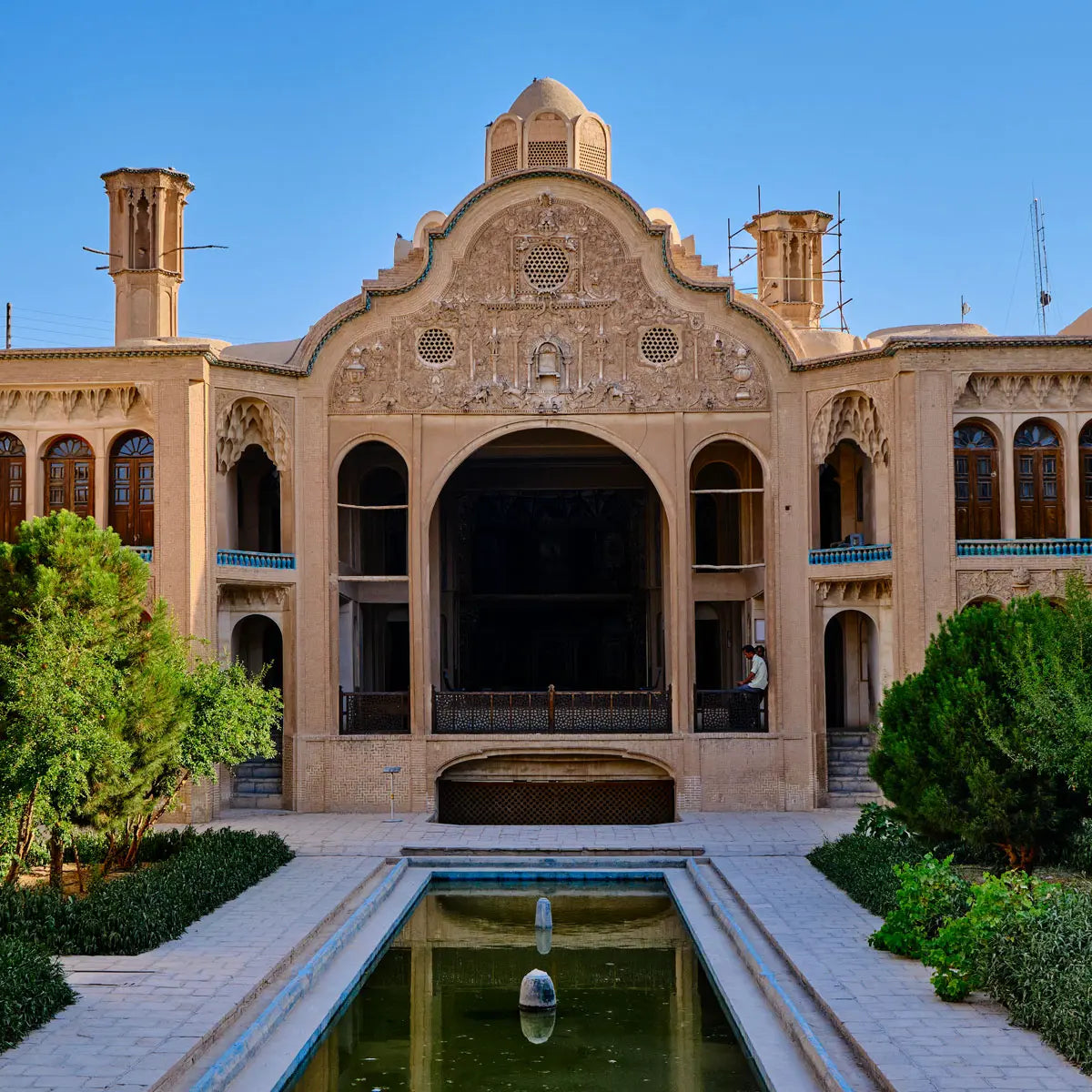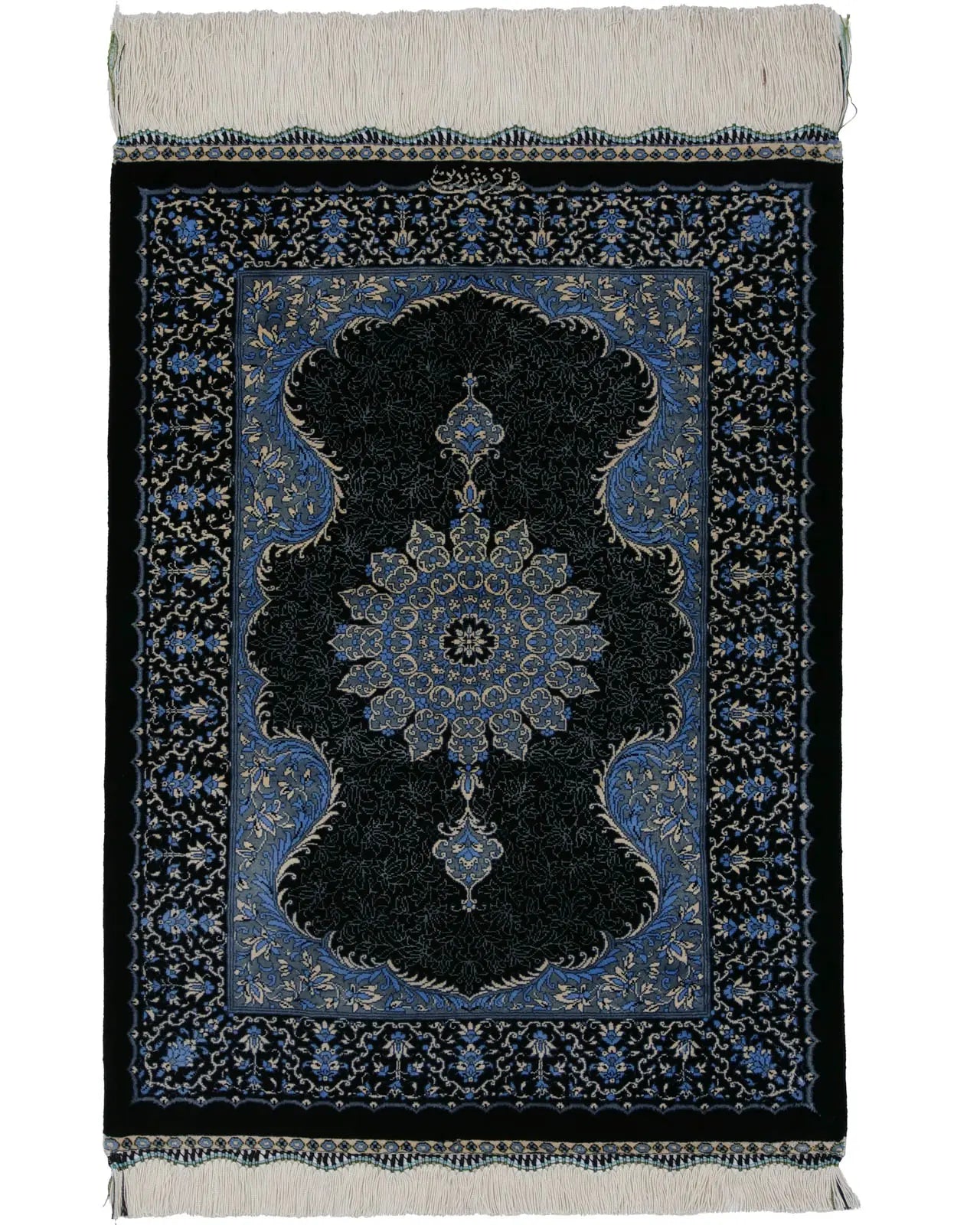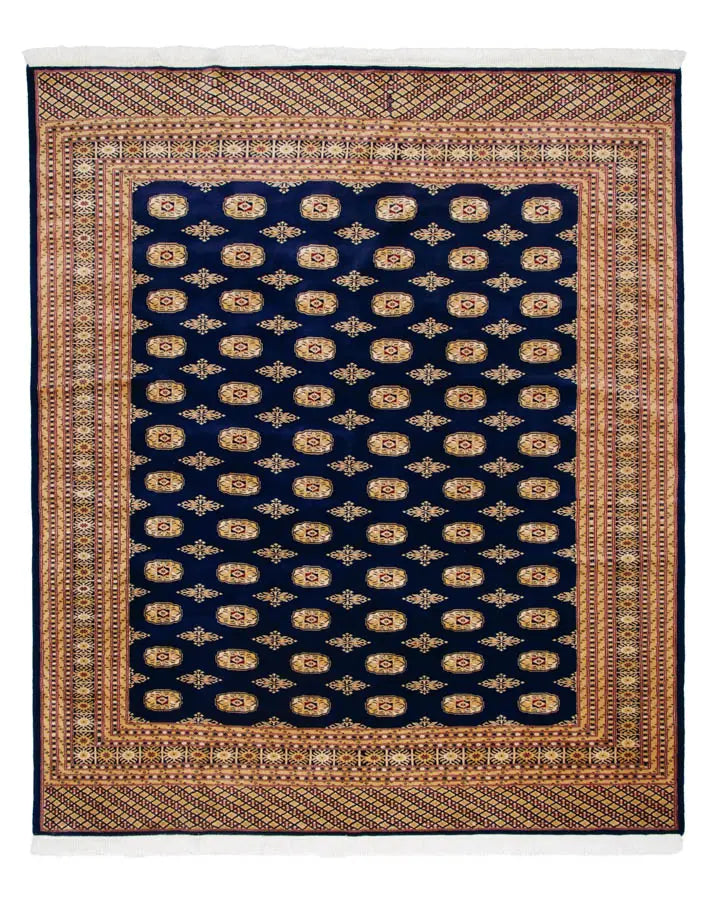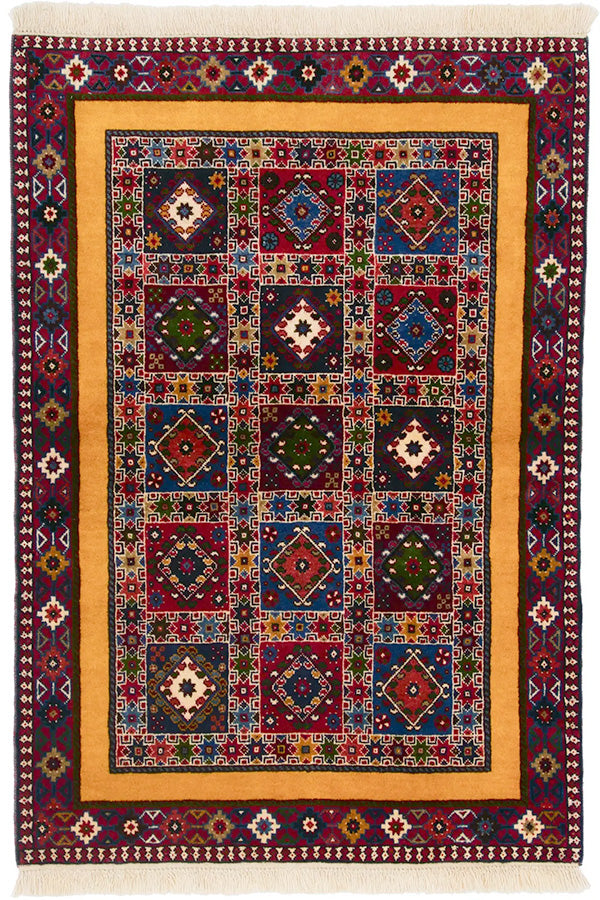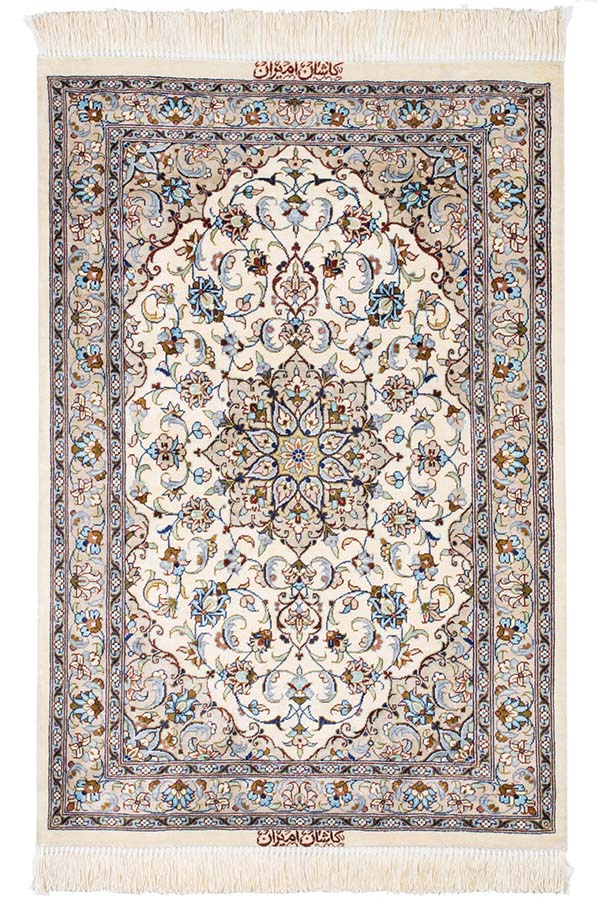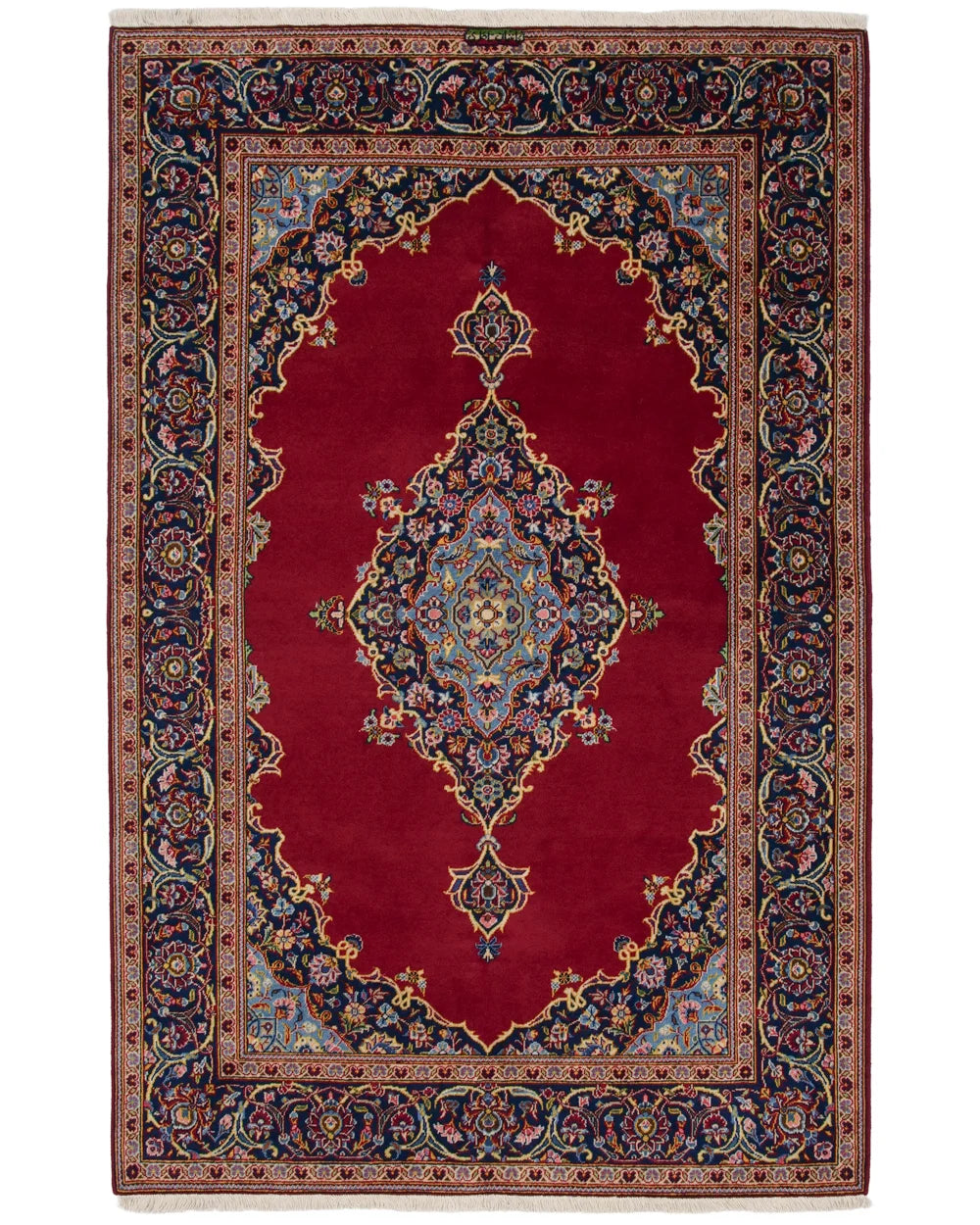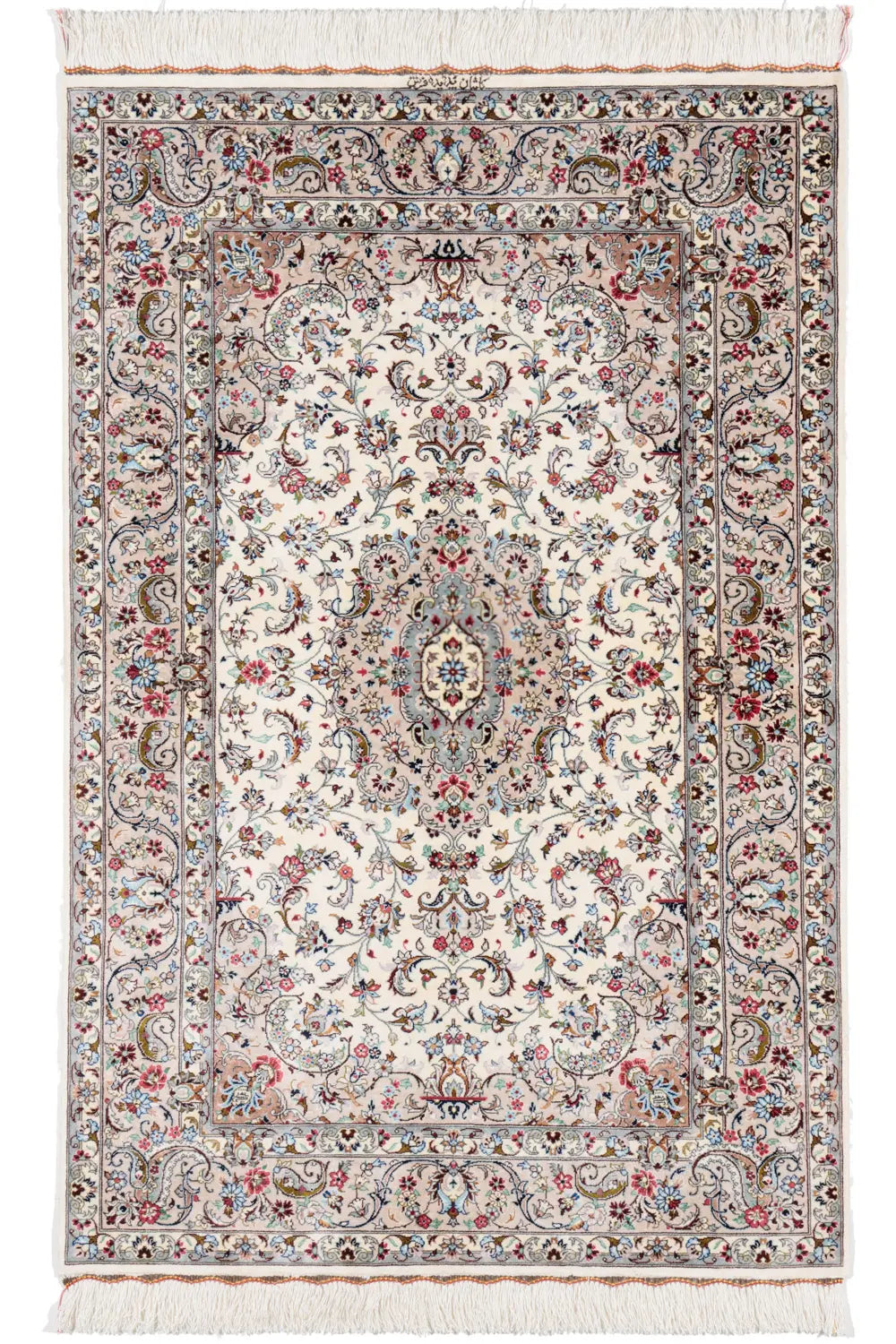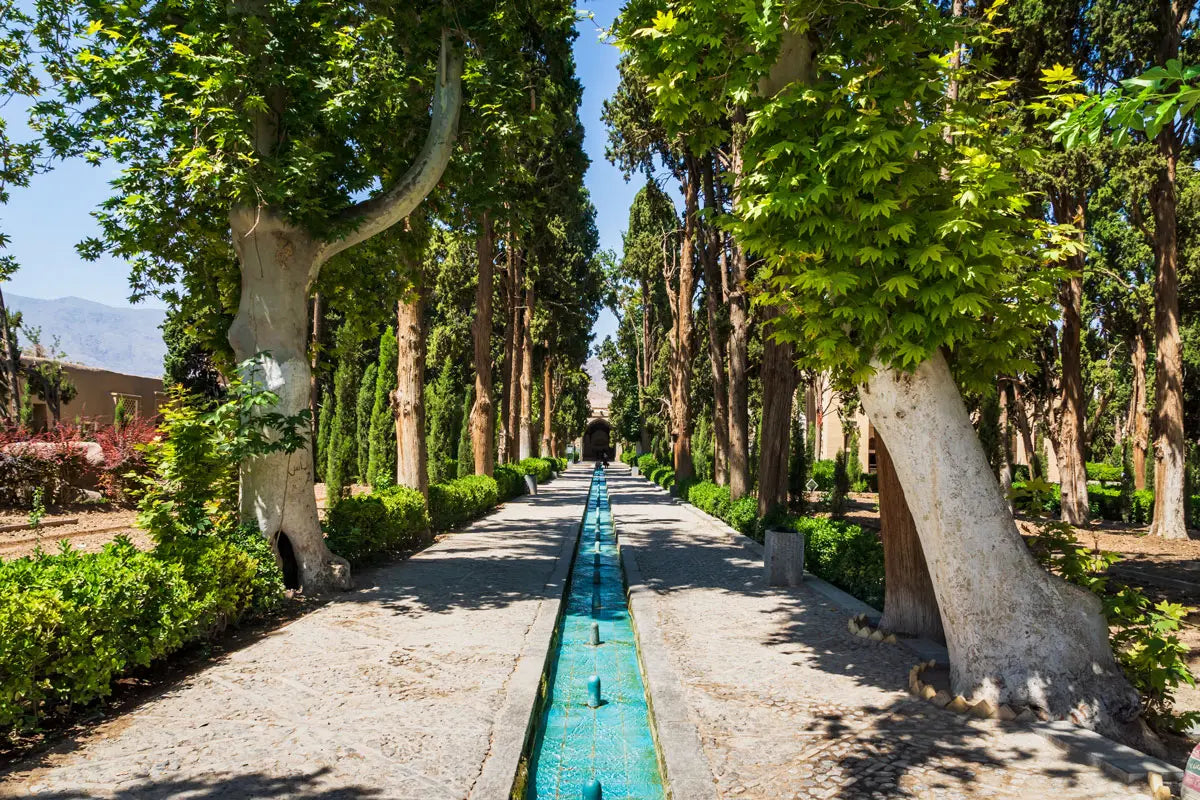
Kashan
Type: Persian carpet
Location: South Tehran, Iran (formerly Persia)
Knot Density: 100,000 - 400,000 knots per square meter
Characteristics: Central medallion; floral pattern; predominantly blue, red, and beige colors
Pile: Mainly high quality wool, sometimes with silk
Located in Isfahan Province in central Iran, Kashan is renowned as the "City of Beautiful Tiles," historically flourishing as a center of fine crafts such as silk weaving and ceramics. In the early 18th century, it also prospered as a royal supplier of Persian carpets.
One of the most iconic traditional designs of Kashan carpets is the "Medallion-Corner" layout, known as "Lachak-Toranj." This pattern features a large central medallion with one-quarter medallions placed in each corner of the field.


Artisans in Kashan are known for their deep respect for tradition. Unlike some other carpet-producing regions, Kashan rarely adopts radically modern designs. Contemporary or Western-oriented motifs are seldom seen, and traditional colors and patterns are still used today.
This unwavering dedication to classical design is what defines Kashan carpets. In Japan, for instance, when people think of "classic Persian carpets," Kashan often comes to mind. Their enduring popularity stems from their authentic craftsmanship and aesthetic quality.
Geography and History of Kashan
Kashan is an oasis city located roughly midway between Tehran and Isfahan in central Iran. Surrounded by desert, it thrived as a trade hub on the Silk Road. The high level of craftsmanship developed through tile and silk production naturally extended to carpet weaving. With a rich history dating back centuries, Kashan was particularly prominent during the Safavid era in the 16th and 17th centuries, when the phrase “a craftsman from Kashan” was considered the highest praise.
In fact, the world-famous Ardabil Carpet, housed in the Victoria and Albert Museum in London, is believed to have been woven in Kashan during the 16th century.
The photo was taken during a visit to the Victoria and Albert Museum in London.


By the early 18th century, Kashan reached its peak with royal carpet workshops. However, political instability led to a temporary decline. The industry saw a revival in the late 19th to early 20th century, especially through the efforts of master weavers like Haj Mottasham, who produced carpets of exceptional quality.
In recognition of this rich cultural and historical heritage, the art of Kashan carpet weaving was inscribed on UNESCO’s list of Intangible Cultural Heritage in 2010.
Design Characteristics
The visual appeal of Kashan carpets is another key factor in their high regard. As noted earlier, the standard designs include either the symmetrical Medallion-Corner format or the all-over floral Afshan style. In both types, the field is densely packed with floral and botanical motifs, often described as a “glorious profusion of blossoms.”
Floral elements are integral to Kashan carpets. Roses, paisley (boteh), arabesques, and lotus-shaped medallions are all common motifs found within the intricate designs.
Color palettes traditionally feature rich shades such as deep red, navy blue, ivory, and beige—tones that convey a sense of elegance and calm.
Typical Kashan carpet color combinations include:
① Red × Cream/Ivory × Dark Blue
② Beige/Cream × Light Blue × Gray
③ Black/Navy × Brown × Yellow tones
Each palette is enhanced with skillfully balanced accent colors and shading contrasts, resulting in one-of-a-kind pieces of woven art.
Overall, Kashan carpets are celebrated for their "classic Persian beauty"—a harmonious blend of ornate design and refined color schemes. They are elegant without being ostentatious and command attention with quiet dignity.
Timeless in style, Kashan carpets fit effortlessly into both traditional Japanese interiors and modern Western spaces. Their universal beauty lies in their ability to feel both traditional and timeless without appearing outdated.
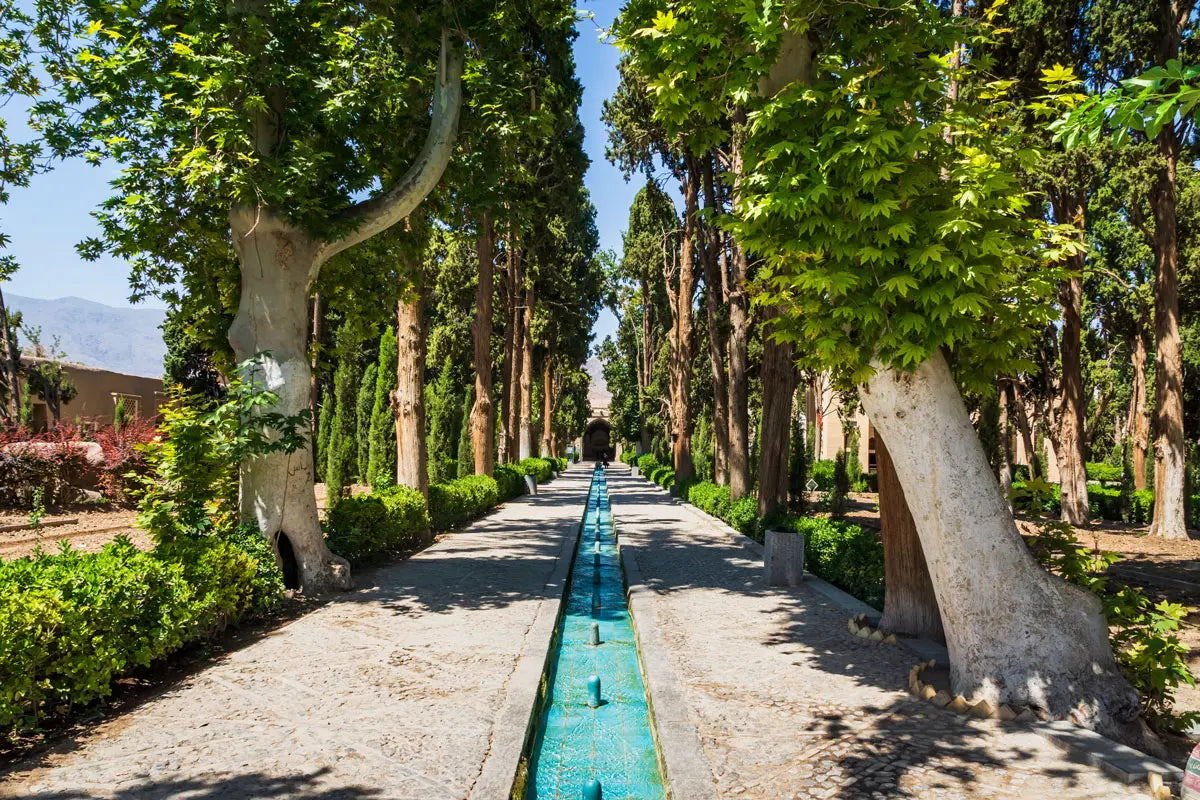
Finn Garden
